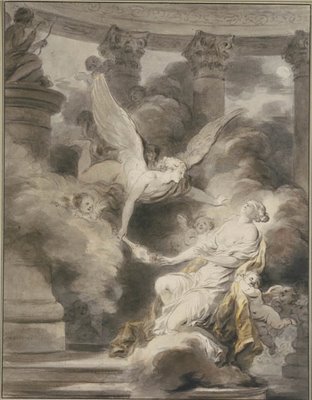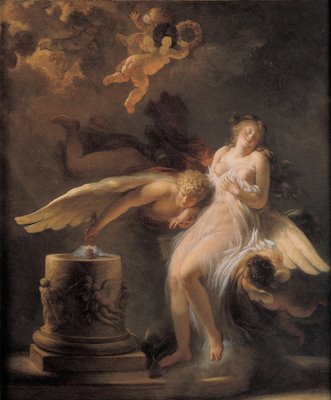Jean-Honoré Fragonard

From my review of "Consuming Passion: Fragonard's Allegories of Love,” a small, slight exhibition at the Clark Art Institute focusing on Jean-Honoré Fragonard's late work. It presents 26 works; just 16 are by Fragonard.
Fragonard (1732-1806) was one of the leading figures - along with François Boucher, his teacher, and Jean-Antoine Watteau - of the French rococo style that came to prominence after the death of King Louis XIV in 1715. Under the Sun King, French art favored weighty religious and historical themes, but rococo's flirty pastoral, mythological, and boudoir scenes were as light and bubbly as champagne. …Read the rest here.
By the 1780s, though, Fragonard had begun to take on a new tone that comes across even in the titles of the paintings, drawings, and prints (by other artists copying Fragonard's original compositions) here: "The Oath of Love," "The Warrior's Dream of Love," "The Invocation to Love." The work remains sexy, but the characters change from friends-with-benefits to mythic soul mates.
Related:
- This review is best read while listening to This.
- Modern Kicks responds.

Pictured from top to bottom: “The Sacrifice of the Rose,” c. 1785-88, black chalk, graphite, brown, red, yellow, and gray washes, Minneapolis Institute of Arts, The Centennial Fund, gift of funds from Mr. and Mrs. Clinton Morrison; “The Sacrifice of the Rose,” c. 1785-88, oil on canvas, Lynda and Stewart Resnick, Los Angeles.






0 Comments:
Post a Comment
<< Home